iPhone 6 and iPhone 6 Plus: Preliminary Results
by Joshua Ho on September 22, 2014 7:07 AM EST- Posted in
- Smartphones
- Apple
- Mobile
- iOS
- iPhone 6
- iPhone 6 Plus
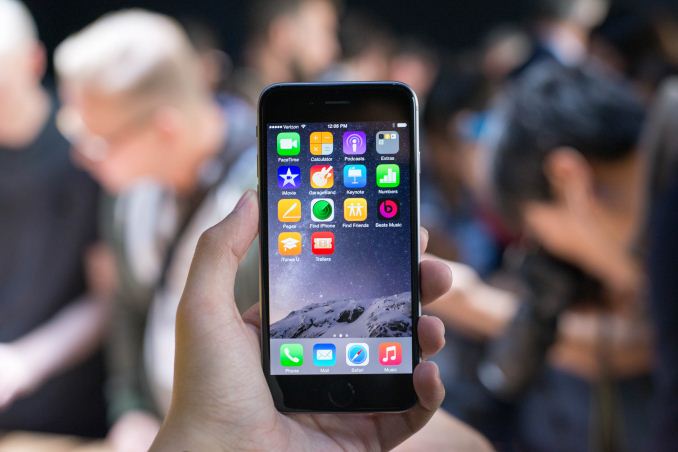
While we’re still working on the full review, I want to get out some preliminary results for the iPhone 6. For now, this means some basic performance data and battery life, which include browser benchmarks, game-type benchmarks, and our standard web browsing battery life test. There’s definitely a lot more to talk about for this phone, but this should give an idea of what to expect in the full review. To start, we'll look at the browser benchmarks, which can serve as a relatively useful proxy for CPU performance.
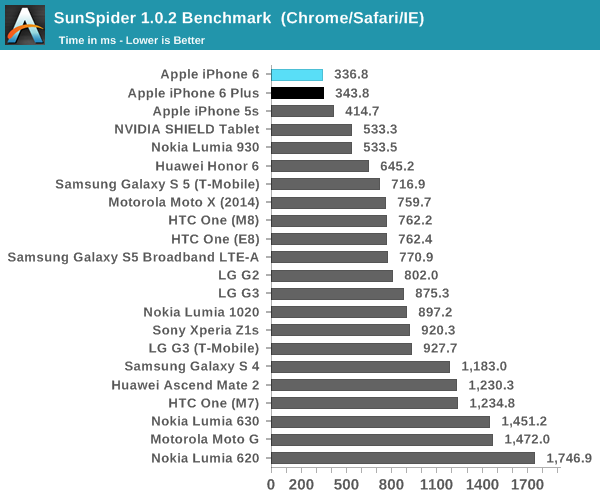
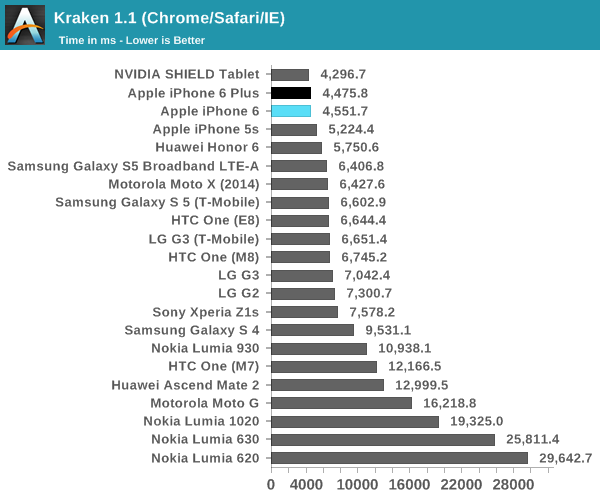
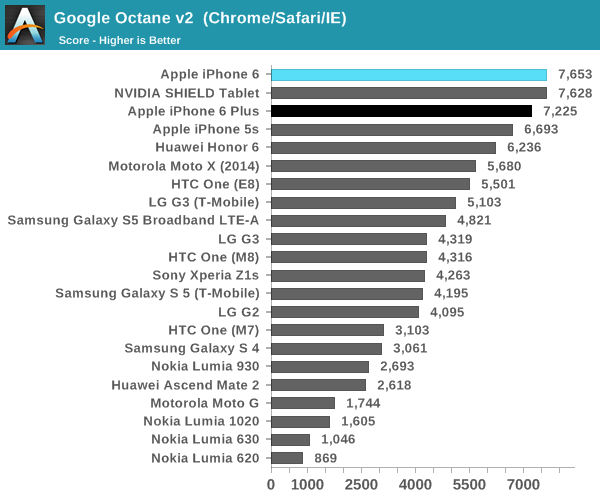
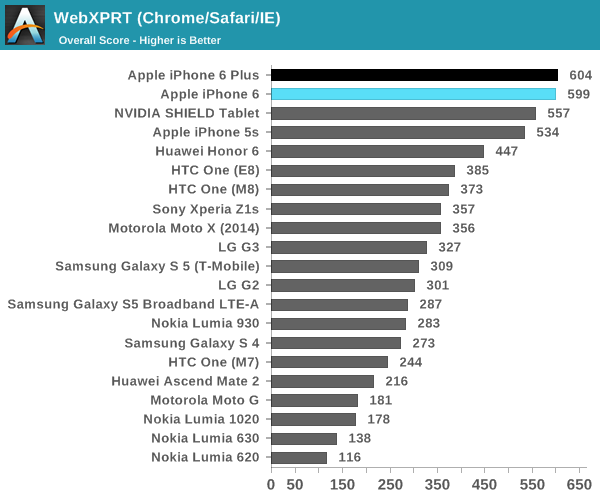
There are a few interesting observations here, as a great deal of the scaling is above what one would expect from the minor frequency bump when comparing A7 and A8. In SunSpider, we see about a 13% increase in performance that can't be explained by frequency increases alone. For Kraken, this change is around 7.5%, and we see a similar trend across the board for the rest of these tests. This points towards a relatively similar underlying architecture, although it's still too early to tell how much changes between the A7 and A8 CPU architectures. Next, we'll look at GPU performance in 3DMark and GFXBench, although we're still working on figuring out the exact GPU in A8.
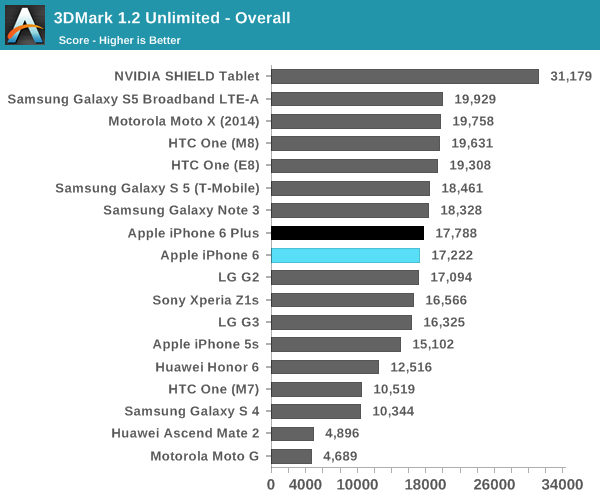
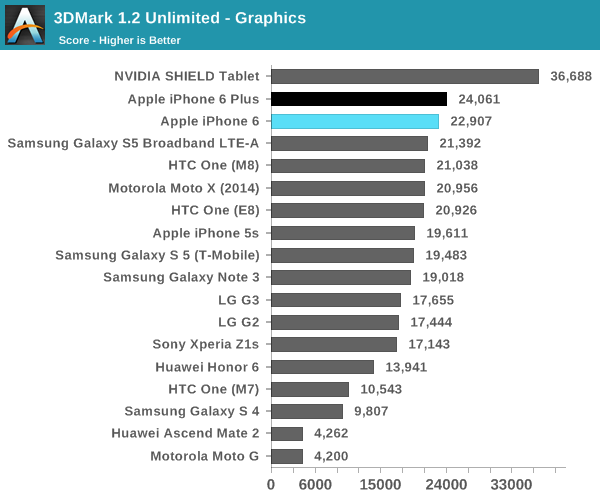
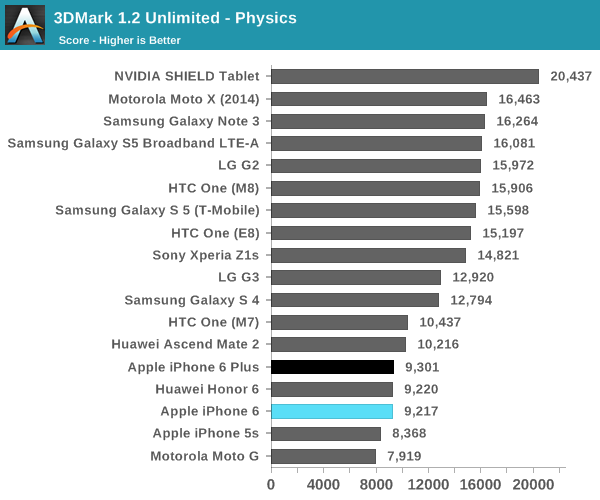
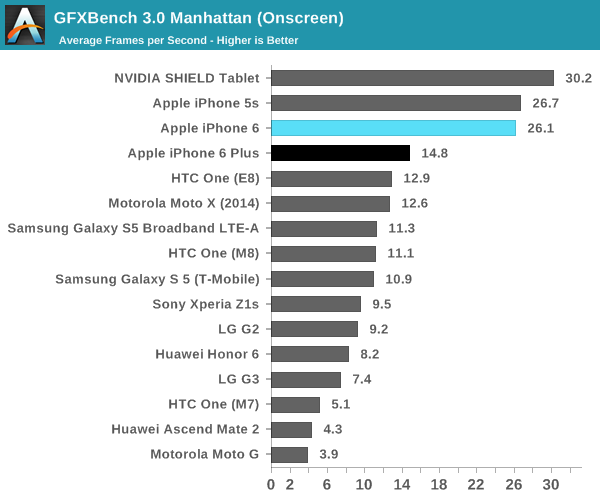
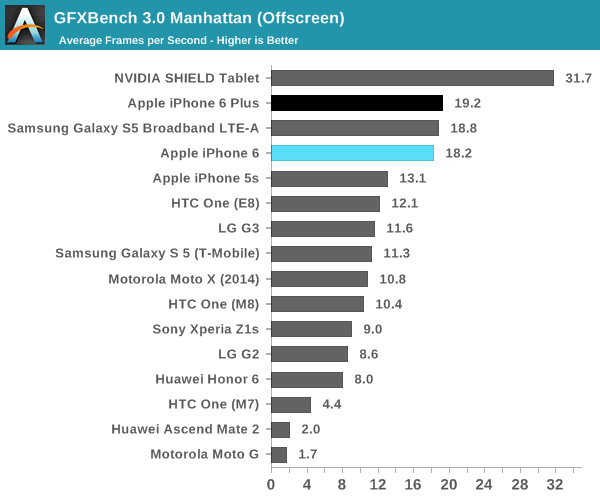
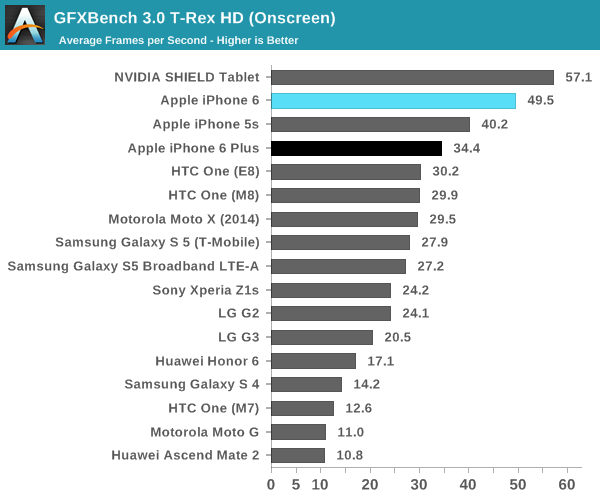
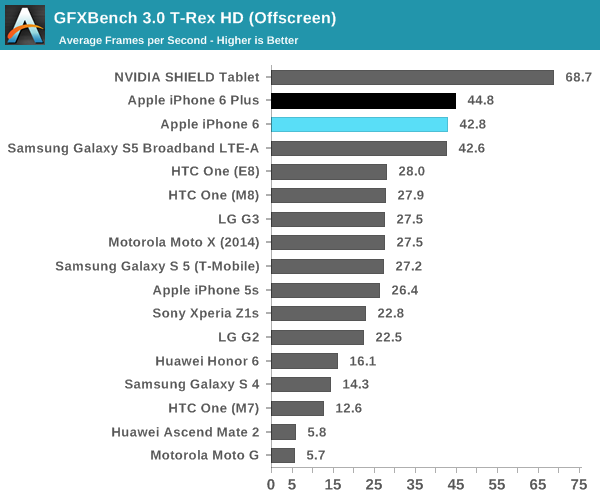
In in GPU benchmarks, we generally see a pretty solid lead over the competition for the iPhone 6/A8. It's seems quite clear that there is a significant impact to GPU performance in the iPhone 6 Plus due to the 2208x1242 resolution that all content is rendered at. It seems that this is necessary though, as the rendering system for iOS cannot easily adapt to arbitrary resolutions and display sizes. Before we wrap up this article though, I definitely need to address battery life. As with all of our battery life tests, we standardize on 200 nits and ensure that our workload in the web browsing test has a reasonable amount of time in all power states of an SoC.

As one can see, it seems that Apple has managed to do something quite incredible with battery life. Normally an 1810 mAh battery with 3.82V nominal voltage would be quite a poor performer, but the iPhone 6 is a step above just about every other Android smartphone on the market. The iPhone 6 Plus also has a strong showing, although not quite delivering outrageous levels of battery life the way the Ascend Mate 2 does. That's it for now, but the full review should be coming in the near future.










316 Comments
View All Comments
JoshHo - Monday, September 22, 2014 - link
As far as I can tell the results of our testing are accurate. The web browsing test has been carefully designed to ensure that all SoCs have some level of sleep in order to avoid penalizing SoCs for being faster.bernstein - Monday, September 22, 2014 - link
will you be testing standby times too?jjj - Monday, September 22, 2014 - link
So it's not the same workload? Maybe detail the battery test some more?For the GPU the perf doesn't seem much. Snapdragon hasn't done a major update in quite a while and the A8 is on 20nm. With 810 arriving the Android bunch should leap ahead.
Anyway, as far as i can tell the GPU is some 19mm2 vs 21mm2 last year and the cores with the cache some 12.5mm2 while the SRAM seems to be some 4.5mm2 . One would assume it's the same 4MB but last year the SRAM area looks like it was 6mm2 so it would be just a 25% shrink for the SRAM.
The cores do seem rather huge for ARM and i do wonder how much that SRAM helps.
varase - Thursday, September 25, 2014 - link
You misunderstand - one way to save battery is to do your task faster and go into idle mode.Affectionate-Bed-980 - Monday, September 22, 2014 - link
But designing a test to have some level of sleep... is that more for an SoC comparison or is that more for real world usage? I think the important thing here is to consider how these results are representative of real world battery stats.Your test method should reflect a real world use scenario or something similar. Testing a certain because its good to normalize for other SoCs isn't alone a sufficient reason.
Impulses - Monday, September 22, 2014 - link
Your device doesn't spend a lot of time in sleep/idle tests thru the day?Affectionate-Bed-980 - Tuesday, September 23, 2014 - link
It does, but my point is the test should be designed not just to be fair for SoCs as Joshua has said, but to be representative of real world use. I think in many cases he's pushing too hard for apples to apples synthetic benches that real world use doesn't see.For example, most users I know use auto brightness. I'd argue that a test setup with autobrightness under CONTROLLED ambient lighting conditions makes more sense than pegging the brightness at 200 lux. Here's a good example. The Nexus 5 is known to have a autobrightness curve on the bright side. Who here actually gets 9 hours SOT on a Nexus 5 as shown by Anandtech? Not many. I'm guessing the autobrightness curve probably penalizes the Nexus 5's battery life. If you look at an apples to apples bench, you might expect the N5 to do well, but in real world use, most users find the N5 to be mediocre at best for battery life. Where's the discrepancy? Probably the autobrightness has something to do with it. That information is completely ignored in the battery life test.
I'd argue that in this case, you have a benchmark that isn't representative of what the phones actually behave like. If you end up being too focused about normalizing everything including SoCs, then you start creating unrealistic benchmarks for the sake of apples to apples.
lucam - Tuesday, September 23, 2014 - link
maybe it's the other way around? Maybe this is the only fai way to compare apple vs apple?Anand has been doing those test from a while, but when it comes to Apple it's never fair?
ufon68 - Tuesday, September 23, 2014 - link
Auto brightness is a software feature(for the curve). The manufacturer can change the curve with an update, thus invalidating all results previously recorded. On android, you can probably even tweak it yourself. You yourself have acknowledged the curves differ from a phone to phone, how does it then make sense to use auto-brightness, when you get different luminance on different phones ? That's what i would hardly call a fair comparison.What you call real world comparison here can rather be called "ignorant user comparison". There is no point in running tests for that.
The same with the SoC sleep. Would you penalize one phone in a battery life test for being quicker and loading 10 pages in a time it gets the other one to load 3 ? It makes a perfect sense for a device to load a page, put SoC to sleep as we expect the reader to read the page anyway - and only then load another one.
varase - Thursday, September 25, 2014 - link
That's probably it then; phonearena probably just let all candidates power through no matter how fast they were, never considering that the iPhone displayed the web page 300 times vs. 175 for some lesser phone. or whatever.I've been there, and phonearena appears to have their own agenda.